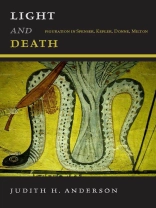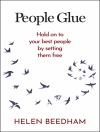Light figures being; darkness, death. Bridging mathematical science, semantics, rhetoric, grammar, and major poems, Judith H. Anderson seeks to negotiate writings from multiple disciplines in the shared terms of poiesis and figuration rather than as cultural opposites.
Analogy, a type of metaphor, has always been the connector of the known to the unknown, the sensible to the infinite. Anderson’s study moves from the figuration of light and death to the history of analogy and its pertinence to light in physics and metaphysics, from Kepler to Donne, Spenser, and Milton. Topics proliferate: creativity, optics, the relation of literature to science, the methodology of thought and argument, and the processes of narrative, discovery, and interpretation.
Inhoudsopgave
Introduction: Issues of Death, Light, and Analogy
1. “The Body of This Death”: Donne’s Sermons,
Spenser’s Maleger, Milton’s Sin and Death
2. Mutability and Mortality in The Faerie Queene
3. Satanic Ethos: Evil, Death, and Individuality in
Paradise Lost
4. Connecting the Cultural Dots: Classical to Modern
Traditions of Analogy
5. Proportional Thinking in Kepler’s Science of Light
6. Analogy, Proportion, and Death in Donne’s
Anniversaries
7. Milton’s Twilight Zone: Analogy, Light, and Darkness
in Paradise Lost
Acknowledgments
Notes
Index
Over de auteur
Judith H. Anderson is Chancellor’s Professor of English Emeritus at Indiana University. Her books include Words That Matter: Linguistic Perception in Renaissance English; Translating Investments: Metaphor and the Dynamic of Cultural Change in Tudor-Stuart England (Fordham); and Reading the Allegorical Intertext: Chaucer, Spenser, Shakespeare, Milton (Fordham).












